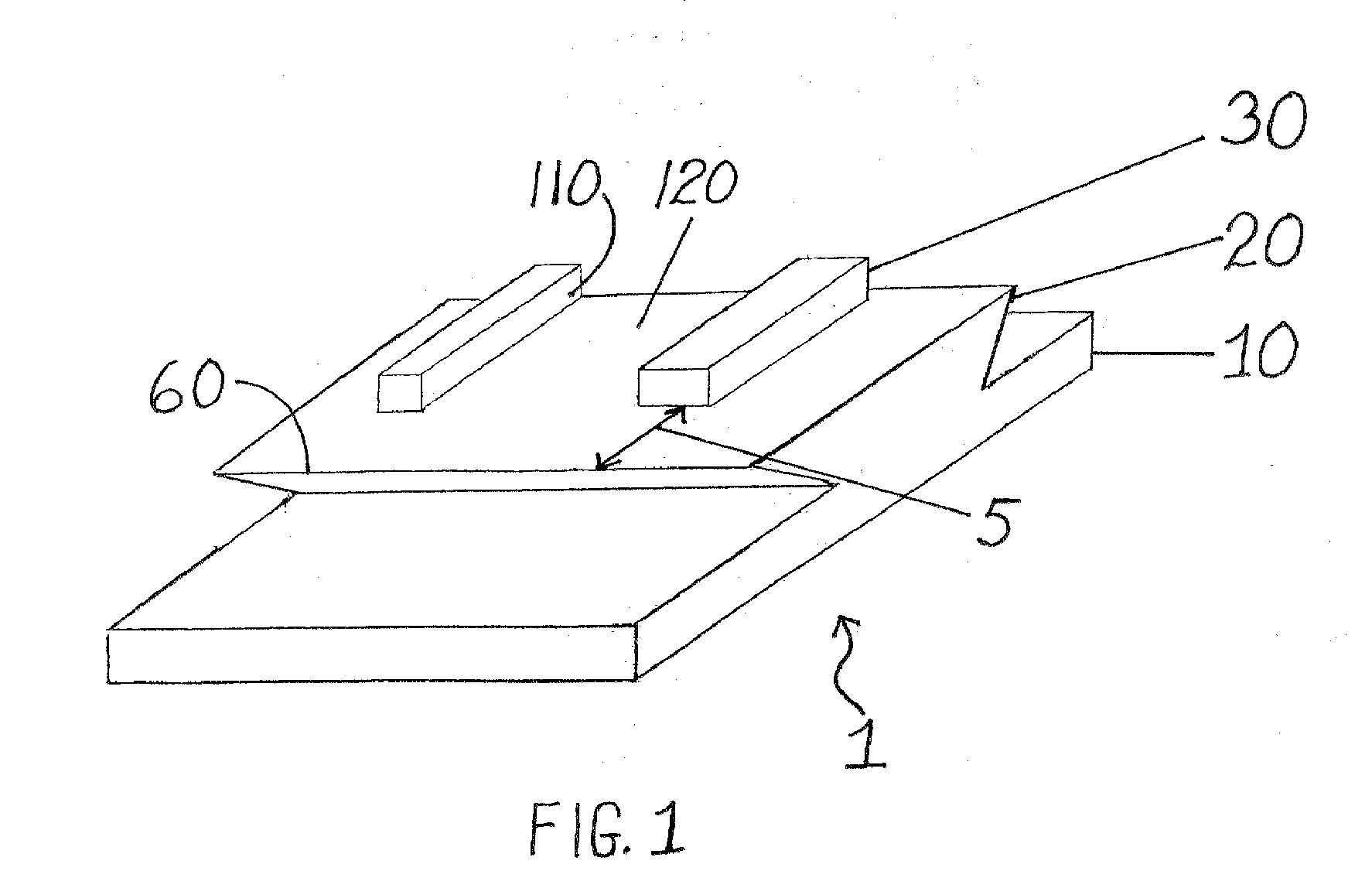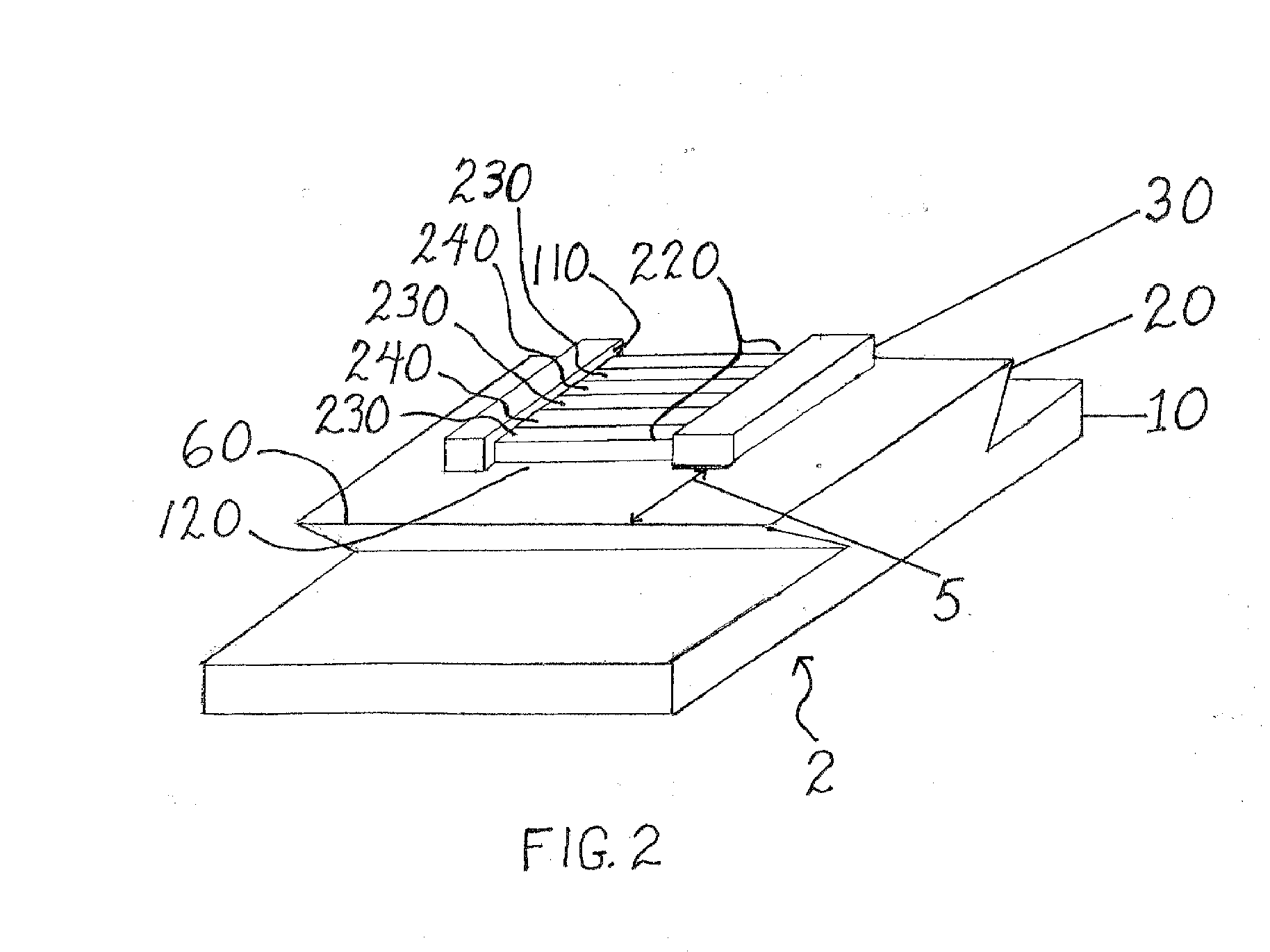Method of Positioning Patterns from Block Copolymer Self-Assembly
a technology of copolymer and positioning pattern, which is applied in the direction of superimposed coating process, resistive material coating, liquid/solution decomposition chemical coating, etc., can solve the problem of limiting the ability to fabricate features with reduced linewidth, the circuit dimensions and features of devices continue to shrink, and the design requirement of conventional lithography cannot m
- Summary
- Abstract
- Description
- Claims
- Application Information
AI Technical Summary
Benefits of technology
Problems solved by technology
Method used
Image
Examples
Embodiment Construction
[0020]A monomer as used herein is a molecule that can undergo polymerization thereby contributing constitutional units to the essential structure of a macromolecule, an oligomer, a block, a chain and the like.
[0021]A polymer as used herein is a macromolecule comprising multiple repeating smaller units or molecules (monomers) bonded together covalently. The polymer may be a natural polymer or a semi-synthetic polymer or a fully synthetic polymer.
[0022]A copolymer as used herein is a polymer derived from more than one chemical species of smaller unit or monomer.
[0023]A block copolymer as used herein is a copolymer that comprises more than one species of monomer, wherein the monomers are present in homogenous larger units or blocks. Each block of the specific monomer comprises repeating sequences of only that monomer, uninterrupted by other monomers. A formula (1) representative of a block copolymer is shown below:
-(A)a-(B)b-(C)c-(D)d- (1)
wherein A, B, C and D represent different mon...
PUM
| Property | Measurement | Unit |
|---|---|---|
| width | aaaaa | aaaaa |
| width | aaaaa | aaaaa |
| width | aaaaa | aaaaa |
Abstract
Description
Claims
Application Information
 Login to View More
Login to View More - R&D
- Intellectual Property
- Life Sciences
- Materials
- Tech Scout
- Unparalleled Data Quality
- Higher Quality Content
- 60% Fewer Hallucinations
Browse by: Latest US Patents, China's latest patents, Technical Efficacy Thesaurus, Application Domain, Technology Topic, Popular Technical Reports.
© 2025 PatSnap. All rights reserved.Legal|Privacy policy|Modern Slavery Act Transparency Statement|Sitemap|About US| Contact US: help@patsnap.com



